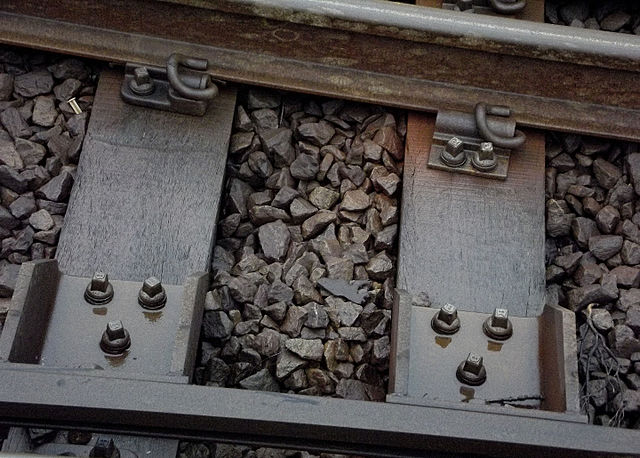A branch line is a secondary railway line which branches off a more important through route, usually a main line. A very short branch line may be called a spur line. Branch lines may serve one or more industries, or a city or town not located on a main line. Branch lines may also connect two or more main lines.
Railway connection between the new Nuremberg–Munich high-speed railway and Germany's historical rail network.
The "0-kilometre peg" marks the start of a branch line in Western Australia.
Conrail Shared Assets Operations' Hainesport Industrial Track is a prime example of a freight branch line. This line sees one short freight train a day primarily to serve a paper mill, industrial park, and lumber yard in Mount Laurel, Hainesport, and Mount Holly, New Jersey, respectively. The nearest main line railroad is roughly six miles (9.7 km) from where this photograph was taken.
A railway track or railroad track, also known as a train track or permanent way, is the structure on a railway or railroad consisting of the rails, fasteners, railroad ties and ballast, plus the underlying subgrade. It enables trains to move by providing a dependable surface for their wheels to roll upon. Early tracks were constructed with wooden or cast iron rails, and wooden or stone sleepers; since the 1870s, rails have almost universally been made from steel.
New railway concrete sleeper
Traditional railway track showing ballast, part of sleeper and fixing mechanisms
Track of Singapore LRT
Ballastless high-speed track in China







